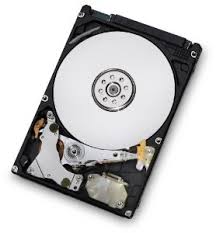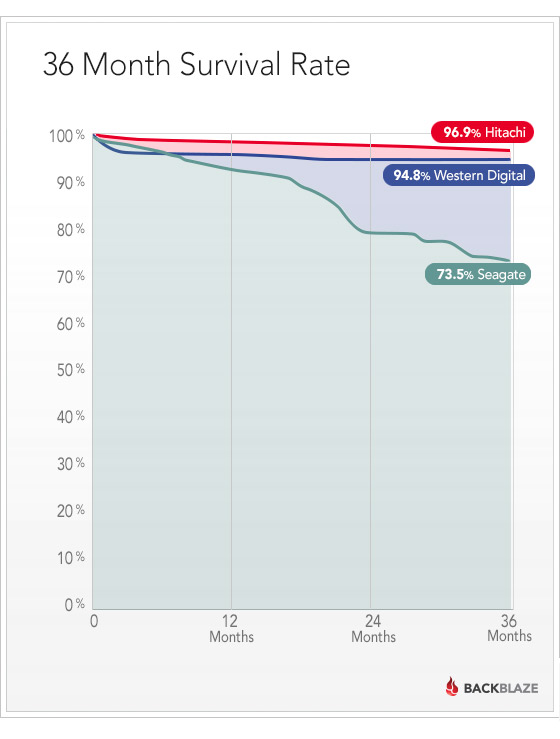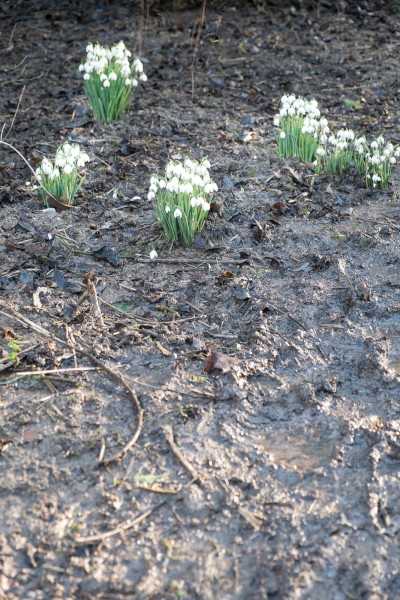 One of the very valuable things to come out of large data centres is large-scale reliability statistics. I’ve written before about my suspicions that my Seagate drives weren’t as reliable as they might be, but I had insufficient data for this to be anything other than anecdotal.
One of the very valuable things to come out of large data centres is large-scale reliability statistics. I’ve written before about my suspicions that my Seagate drives weren’t as reliable as they might be, but I had insufficient data for this to be anything other than anecdotal.
And then a couple of weeks ago, I pulled a couple of old 2.5″ drives off a shelf — Western Digital ones, I think — intending to reuse them for backups. They both span up, but neither would work beyond that.
So I was very interested by this Backblaze blog post which discusses their experience with a few thousand more drives than I have at my disposal. They use consumer-grade drives, and are very price-sensitive.
A quick summary:
Some quotes:
Hitachi does really well. There is an initial die-off of Western Digital drives, and then they are nice and stable. The Seagate drives start strong, but die off at a consistently higher rate, with a burst of deaths near the 20-month mark.
Having said that, you’ll notice that even after 3 years, by far most of the drives are still operating.
Yes, but notice, too, that if you have four computers with Seagate drives, you should not expect the data on one of them to be there in three years’ time. And, quite possibly, not there by the Christmas after next.
The drives that just don’t work in our environment are Western Digital Green 3TB drives and Seagate LP (low power) 2TB drives. Both of these drives start accumulating errors as soon as they are put into production. We think this is related to vibration.
and
The good pricing on Seagate drives along with the consistent, but not great, performance is why we have a lot of them.
If the price were right, we would be buying nothing but Hitachi drives. They have been rock solid, and have had a remarkably low failure rate.
and
We are focusing on 4TB drives for new pods. For these, our current favorite is the Seagate Desktop HDD.15 (ST4000DM000). We’ll have to keep an eye on them, though.
Excellent stuff, and worth reading in more detail, especially if longevity is important to you. It’s tempting to fill old drives with data and put them on the shelf as archival backups, but this would suggest that you should only use new drives for that!
Oh, and if you’re wondering about which SSDs to buy, this report suggests that Intel ones are pretty good.
Update: Thanks to Dominic Plunkett for the Backblaze link, and for Rip Sohan for a link in the comments to the TweakTown article that attempts (with some, but not a great deal, of success) to debunk some of this. The previous article I mentioned above links to an older Google study which didn’t distinguish between manufacturers and models, but did say that there was a correlation between them and the failure rates. It also catalogued failure rates not too dissimilar to the Backblaze ones after 3 or so years, so the general implication for home archiving remains!


Recent Comments